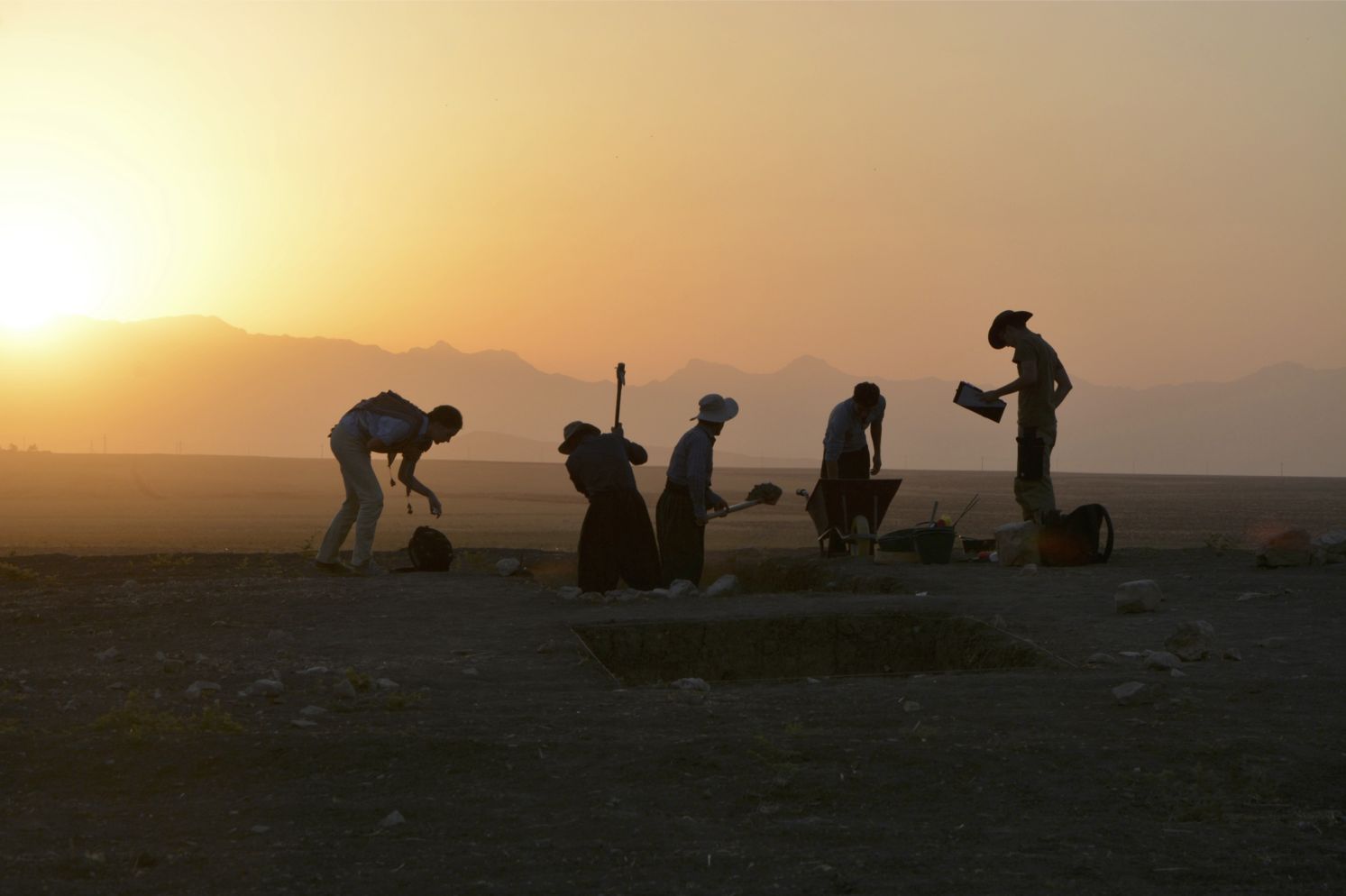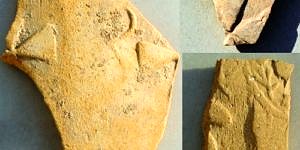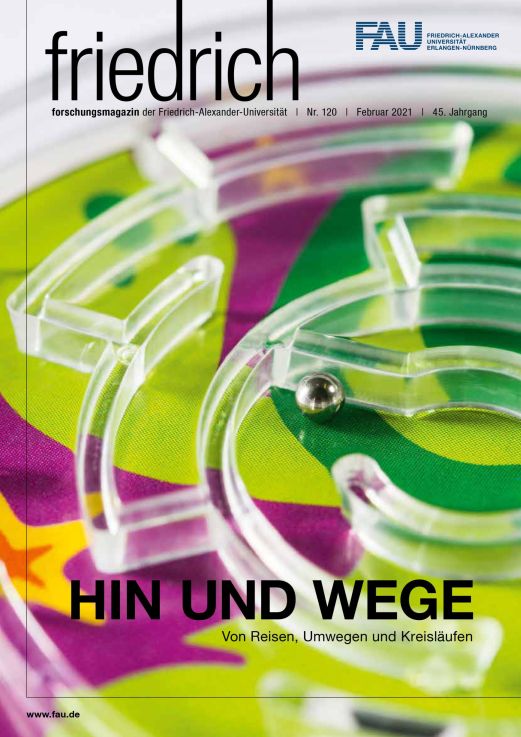How our view of the world colours our perspective
The silk roads were once the most important trading routes between Europe and China. At the same time, they encouraged the spread of Christianity towards the East. Today, the old idea is experiencing a not entirely uncontroversial revival in the concept of the ‘New Silk Road’.
In the year 138 BC, Chinese Emperor Wu of Han dispatched a large diplomatic and military delegation to the territories to the west of China, paving the way towards what would later become known as the silk roads. From then on, the extensive network of caravan and marine routes continued to expand and become more defined over the centuries. It had a vital role to play in shaping and expanding the economic and cultural relationships between China and Central, South and West Asia, as well as to regions in the Middle East and Europe.

Coined the Silk Road in 1877 by the geographer Ferdinand von Richthofen, this became the most important trading route between Europe and China in Ancient and Medieval times. The network of routes and highways was not only used to transport a vast array of goods such as precious metals, gemstones, glassware, exotic animals, spices and medicinal products, it also contributed to the exchange of knowledge, inventions, ideas and religions. At FAU, professor Dr. Ute Verstegen explores the role the silk roads had to play in the spread of Christianity beyond the Mediterranean towards the East by investigating material cultural artefacts.
Professor Verstegen, Chair of Christian Archaeology, and her team have come across much evidence, particularly in the areas of the Middle East previously dominated by the Sasanian Empire, nowadays Iraq, Iran and neighbouring regions such as the Caucasus, which indicates that the Christian religion was gaining strength in the region in Late Antiquity. ‘The churches and monasteries which were built in the latter period of the Sasanian Empire and were often still used during the early Islamic period are particularly worthy of mention,’ says Prof. Dr. Ute Verstegen. ‘In addition, objects such as vessels or seals decorated with Christian symbols have been found in numerous excavations.’
The Christian influence wanes the further east you go, moving through Central Asia towards China, but there are still indications for its spread. ‘There are reports written by early Christian communities in China which clearly state that Christianity had arrived in the region by the year 635 AD,’ Prof. Verstegen explains. Some of the finds which have left the most lasting impression on her are Christian burial grounds, everyday objects such as pendants in the shape of the cross or a bilingual stele inscribed with characters from both Chinese and the East Syrian church.
However, Prof. Dr. Ute Verstegen, who is also a member of the central management committee of the German Archaeological Institute (DAI), has not only managed to show the spread of Christian culture along the trading routes of the silk roads and prove that Christians were integrated in the Sasanian Empire. She has also discovered that pilgrims had a significant role to play in the spread of early Christianity along the silk roads. ‘Pilgrims were not only drawn to pilgrimage sites in their own region, the Holy Land was also a popular destination for pilgrims from churches in the East, as well as Armenia and Georgia.’

The FAU researcher is quite literally covering new ground with her research project, as archaeological investigations in German-speaking countries have only rarely touched on the material culture of early Christianity beyond the borders of the Roman Empire. Prof. Dr. Ute Verstegen believes that this is largely due to subject constraints influencing research in the German academic system. ‘Christian archaeology and classical archaeology traditionally often follow the lines of the former borders of the Roman Empire or the Mediterranean, neglecting the regions further to the east. As for studies into Middle Eastern or Islamic archaeology, they not only focus on geographical borders, but particularly also on other means of marking time periods.
She therefore sees her research project as a means of closing the gap. The road can at times be bumpy, but Prof. Dr. Ute Verstegen believes that the rewards make it worthwhile. Although the situation in the often politically unstable region means that it is not always possible to work on the ground safely and without restrictions, her inquisitive nature and keen sense of adventure stand her in good stead. The main driving force behind her work, however, is her wish not only to open up a new area of research for her own subject at FAU but also to encourage new, enlightening perspectives across various disciplines.
China hopes to expand its global influence and shift the international focus more towards China.
The silk roads are also the focus of academic research at other faculties at FAU. At the Chair of Supply Chain Management, Dr. Henrik Birkel is researching the New Silk Road project from a predominantly economic perspective. Also known as the Belt and Road Initiative (BRI), this new silk road is intended to connect China, Central Asia, Russia and Germany by rail, at the same time as establishing a marine route to Venice via the Indian Ocean, the Suez Canal and the Mediterranean Sea. Why is China reviving this old concept? What impact will the new silk roads have on the countries along the way? Who will benefit from them and who may be the loser at the end of the day? Which challenges does the project pose for Germany? These are the issues at the centre of Dr. Hendrik Birkel’s research.
He believes, ‘the concept of the new silk road is at the core of Chinese foreign policy. China intends to create a new trading network spanning Asia, Africa and Europe, and promises to invest and drive innovation in the countries involved. At the same time, China hopes to expand its global influence and shift the international focus more towards China.’ According to the postdoctoral researcher at the Chair of Supply Chain Management, ‘the Chinese government aims to improve the output of Chinese companies by generating greater turnover and creating more jobs. Until now, up to 90 percent of the work has been allocated to Chinese companies. In countries such as Pakistan, Myanmar or the Congo, infrastructure such as harbours, railway tracks and roads has been constructed thanks to massive Chinese investments using a Chinese workforce.’
Change of perspective
Everyone knows straight away what is meant by the ‘Silk Road’. The term was coined for the legendary trade route as seen from the Western perspective: at that time, the silk transported from China was the most sought after commodity for Western traders. However, we often tend to forget that trade also flourished in the other direction. It was predominantly glassware which was transported from the West to China. Seen from an Eastern perspective, the trade route could well have been named the ‘glass road’.
However, Dr. Hendrik Birkel firmly believes that the project will also benefit the global logistics market. ‘A niche will be created for goods which can be transported quicker than by ship and cheaper than by plane. The railway only needs between 14 and 17 days, which is twice as fast as a container ship. At the same time, transporting a tonne of goods by rail only costs one fifth of what it would cost by plane. New value chains and business models will arise as a result.’ Furthermore, ‘the expansion of infrastructure and the resulting boost to the economies of the countries along the route may open up new markets or make it easier for European companies to do business,’ he continues.
According to Dr. Hendrik Birkel, the main cities to benefit in Germany will be those at the beginning and end of the line, for example thanks to the construction of new logistics centres. In addition, companies may no longer always need to build a factory abroad in order to be able to offer their customers a ‘just in time’ delivery service from Germany. ‘This is particularly interesting for sensitive high-tech components, where companies are keen to protect their intellectual property,’ he adds. ‘German harbours such as Hamburg, Wilhelmshaven, Mukran and Rostock are also hoping to benefit from Chinese capital investments.’
At the same time, however, he warns that this may lead to an unwanted degree of dependency. ‘It is often claimed that the Chinese government deliberately encourages financially weaker countries to run up excessive debts to give China more political leverage over these countries. However, apart from one or two proven examples, there is no solid empirical evidence for this theory.’ Nevertheless, the project does have a huge political dimension, as the new trade routes will bind the countries along the route and their markets more closely to China. Dr. Hendrik Birkel stresses that ‘China’s increased political influence as a result of the New Silk Road initiative will indeed be a worry, particularly in Eastern Europe. It may even potentially cause a rift within the EU.’
This is another aspect of the gigantic infrastructure project between Europe, Asia and Africa which researchers at FAU will be keeping a close eye on. No matter how varied the issues concerning the silk roads may be, at FAU, archaeologists, economists, sinologists and political scientists are all working hand in hand to get to the crux of the matter.
About the author
Michael Kniess studied political science and sociology at FAU and completed training as a journalist before starting his career as a freelance journalist and author. The publications he writes for include heute.de, die Welt am Sonntag and the Nürnberger Zeitung.
FAU research magazine friedrich
 This article first appeared in our research magazine friedrich. You can order the print issue (only available in German) free of charge at presse@fau.de.
This article first appeared in our research magazine friedrich. You can order the print issue (only available in German) free of charge at presse@fau.de.
